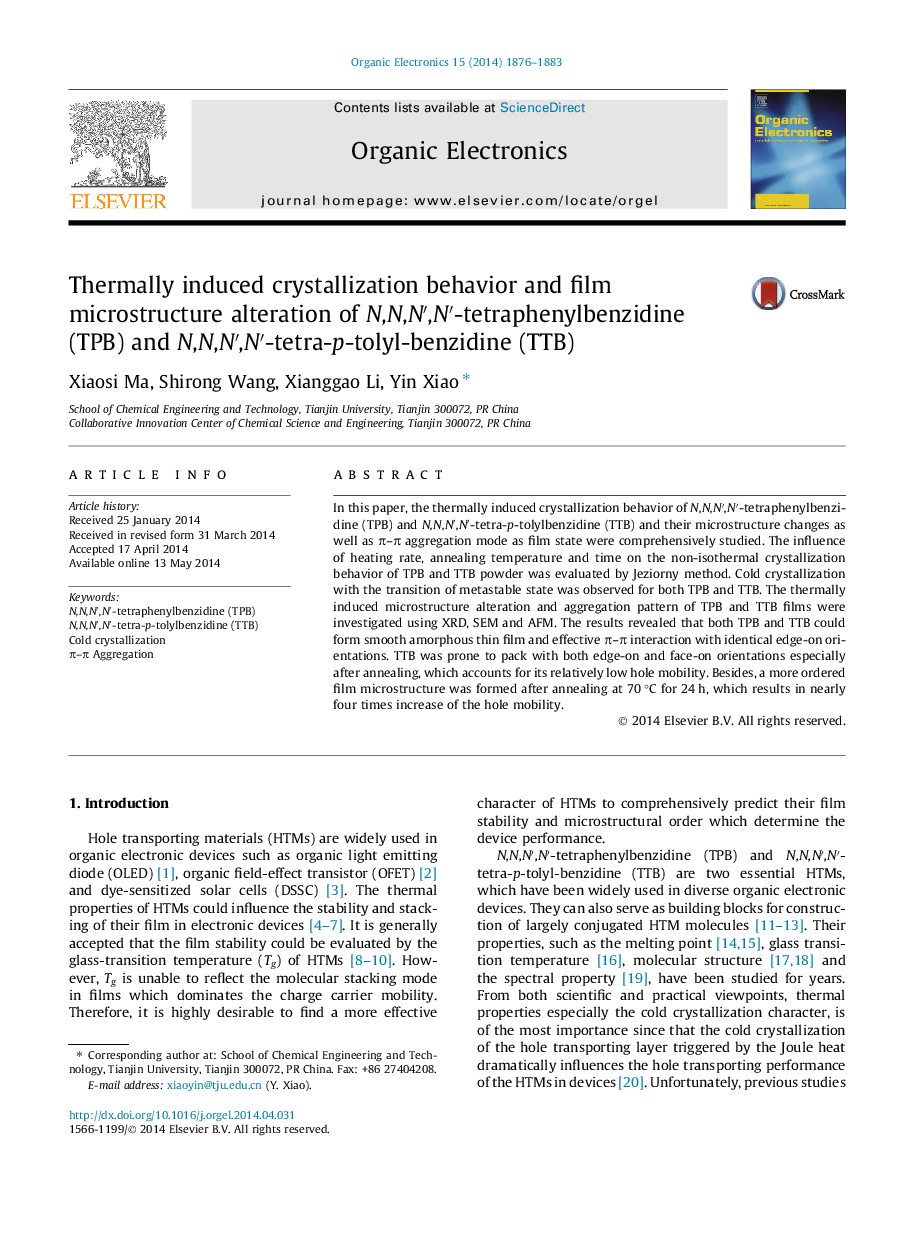| Article ID | Journal | Published Year | Pages | File Type |
|---|---|---|---|---|
| 1263837 | Organic Electronics | 2014 | 8 Pages |
•The cold crystallization behavior of TPB and TTB powder and their π–π aggregation in film were studied for the first time.•Both TPB and TTB could form smooth film and effective π–π interactions with edge-on orientations.•Annealing process is propitious to the formation of more ordered microstructure, resulting in improved carrier mobility.•The cold crystallization character of HTMs could be employed to predict their film structural order degree and charge carrier mobility.
In this paper, the thermally induced crystallization behavior of N,N,N′,N′-tetraphenylbenzidine (TPB) and N,N,N′,N′-tetra-p-tolylbenzidine (TTB) and their microstructure changes as well as π–π aggregation mode as film state were comprehensively studied. The influence of heating rate, annealing temperature and time on the non-isothermal crystallization behavior of TPB and TTB powder was evaluated by Jeziorny method. Cold crystallization with the transition of metastable state was observed for both TPB and TTB. The thermally induced microstructure alteration and aggregation pattern of TPB and TTB films were investigated using XRD, SEM and AFM. The results revealed that both TPB and TTB could form smooth amorphous thin film and effective π–π interaction with identical edge-on orientations. TTB was prone to pack with both edge-on and face-on orientations especially after annealing, which accounts for its relatively low hole mobility. Besides, a more ordered film microstructure was formed after annealing at 70 °C for 24 h, which results in nearly four times increase of the hole mobility.
Graphical abstractFigure optionsDownload full-size imageDownload as PowerPoint slide
